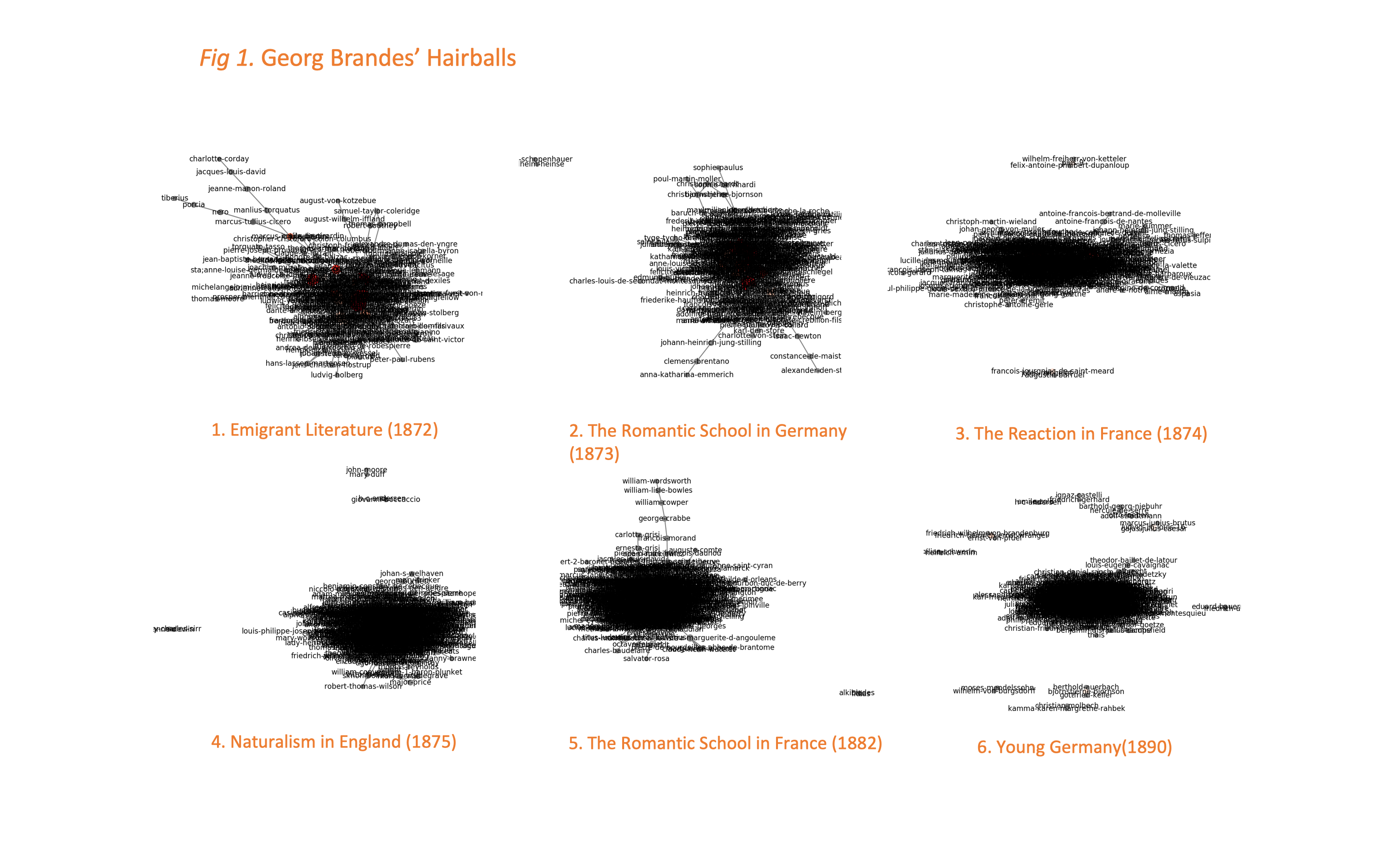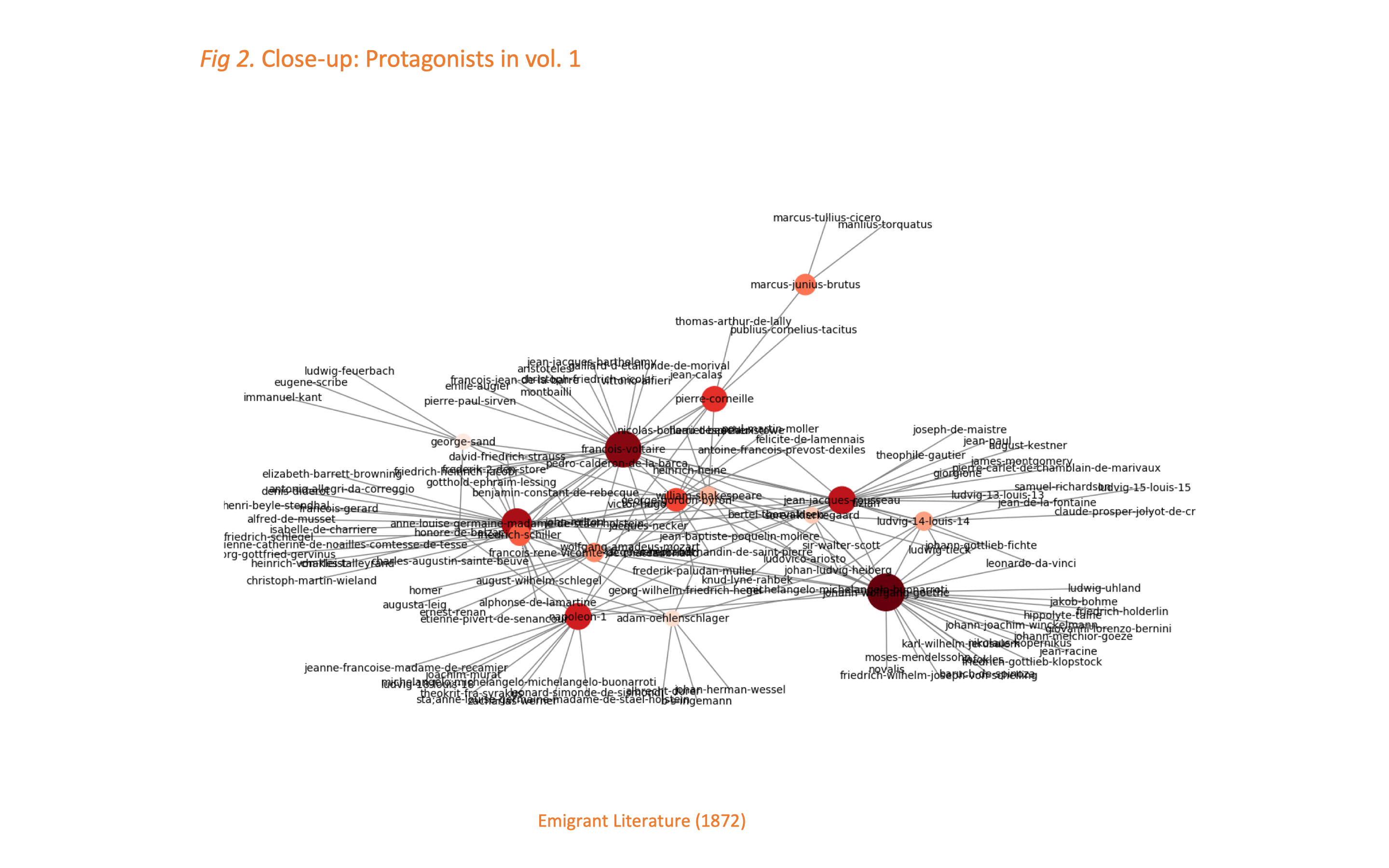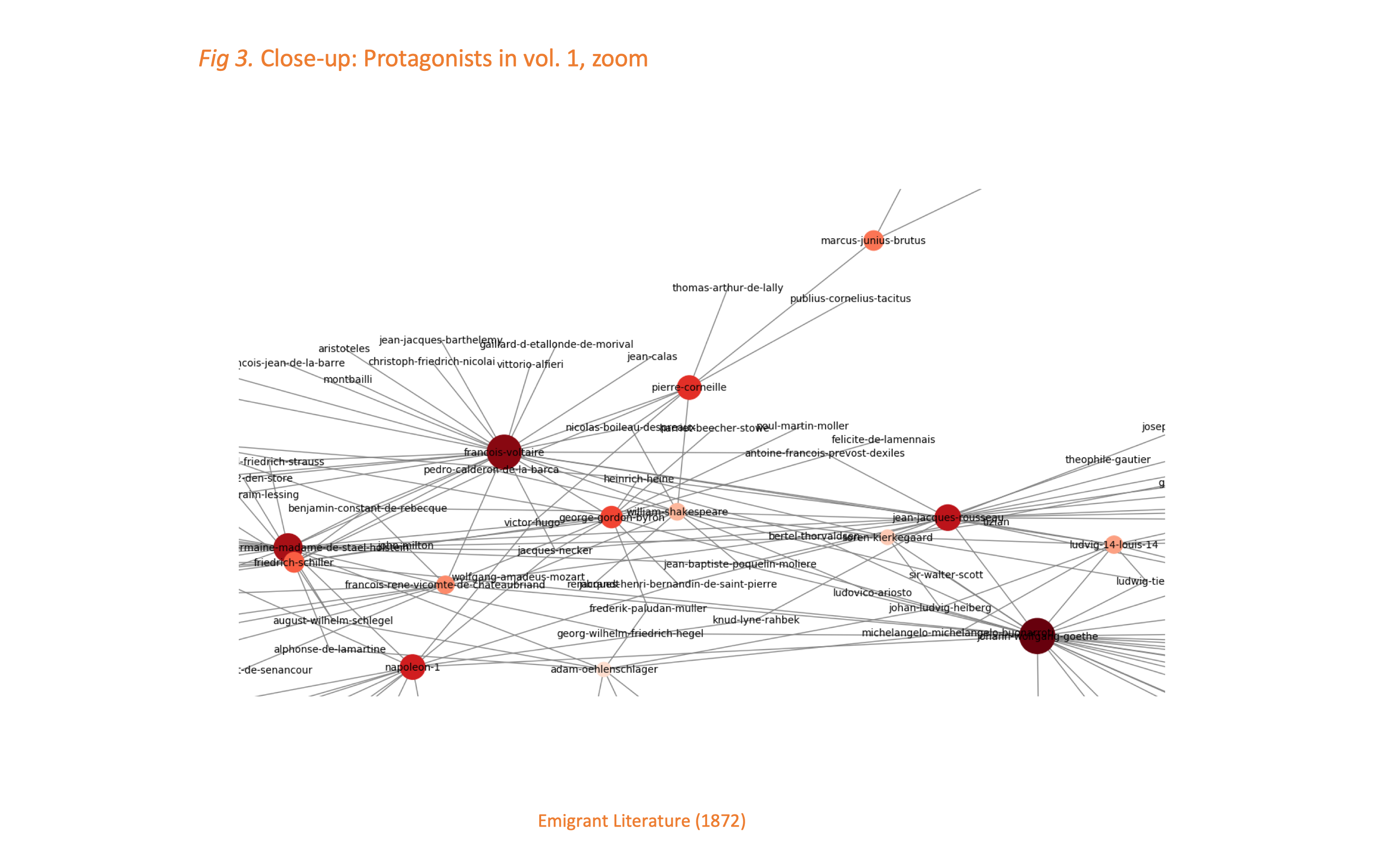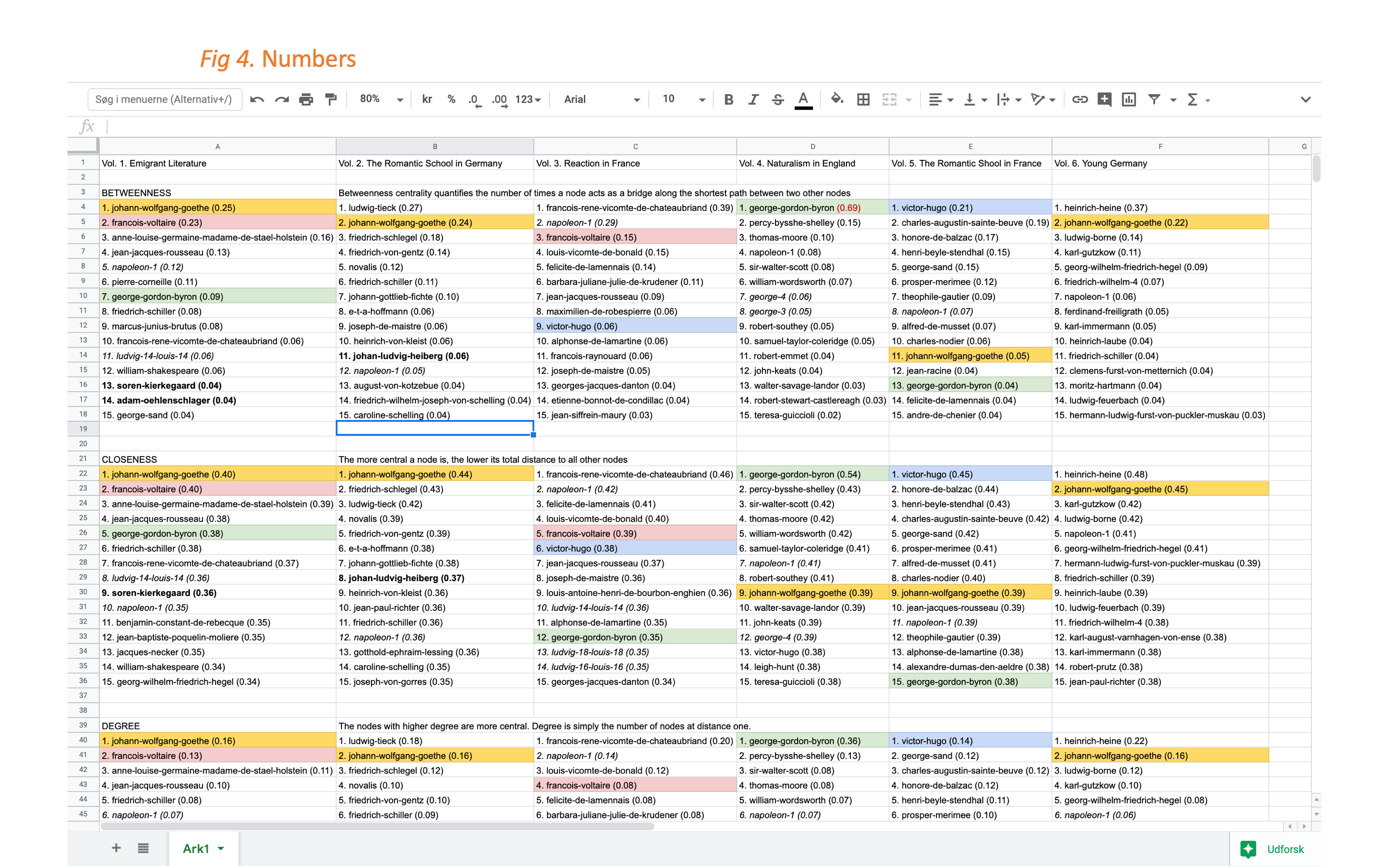by
Poster for the DH2019 conference in 9-12 July Utrecht focussing on network analysis of Brandes' Main Currents.
View full poster here (PDF, opens in a new window). Documented below are the proposal text as well as illustrations.
Who were the protagonists of 19
The text, to which network analysis is applied, is Main Currents of 19th Century Literature (6 vols. 1872-1890) by the Danish literary critic Georg Brandes. Tracing the course of European thought in the first half of the nineteenth century by describing the most important movements in French, German, and English literature, it was a highly influential handbook with translations to several languages (German, English, French, Polish, Russian etc.), whereby Brandes’ somewhat personal and idiosyncratic take on the subject to some extent came to represent a common European frame for the understanding of the literature of the recent past (Larsen 2012). In 1927, Thomas Mann, the German author and Nobel Prize winner, labelled the Main Currents ...… “the bible of young, intellectual Europe”.
By a thorough, manual TEI-encoding through philologists establishing a digital scholarly edition of the some 3,000 pages work, different opportunities of digital explorations have been enabled and facilitated, not least, network analysis. All some 2000 historical persons featured in the work are tagged and, furthermore, identified to unique IDs, all linked to a relational database with metadata (name, year of birth/date, nationality, profession etc.). For this investigation we automatically construct an edge between two nodes every time the entity occurs in the same paragraph of the text.
On the basis of these highly curated and reliable data, the poster aims to show the results of our endeavours to analyse and visualise central and, hopefully, new aspects of Brandes’ vast and complex work. More specifically, and along the lines of modern historiography (White 1973) we want to explore Brandes’ historical writings as texts reliant on strategies of narration and emplotment. Firstly, inspired by network studies of dominance relations in dramatic works (Fischer et al 2018) we want to identify the central characters in Brandes’ display of nineteenth century literature. We will investigate the different common measures for centrality (degree, closeness, betweenness, eigenvector): Which are the most appropriate for our data and why? What can they tell us that we didn't know beforehand? Secondly, and tentatively, following the author’s own characterisation of his work as a “drama in six parts” (Brandes 1972, p. 7), we want to study the dynamic composition of the six volumes with the help of network analysis, by extracting, visualising, analysing and comparing networks of each the six volumes comprising the work, whereby the problems of intertwining the static character of networks with the sequentiality of narrative will be addressed. Already suggested by Moretti 2011 and in recent time discussed and put to use in regards to computational methods (e.g. Fischer et al 2017), the application of network analysis as a tool for quantitative plot analysis has hitherto been restricted to works of fiction. Brandes’ essentially narrative approach to the writing of literary history as well as the biographical and sociological character of his criticism make such a combination of methods highly relevant.



